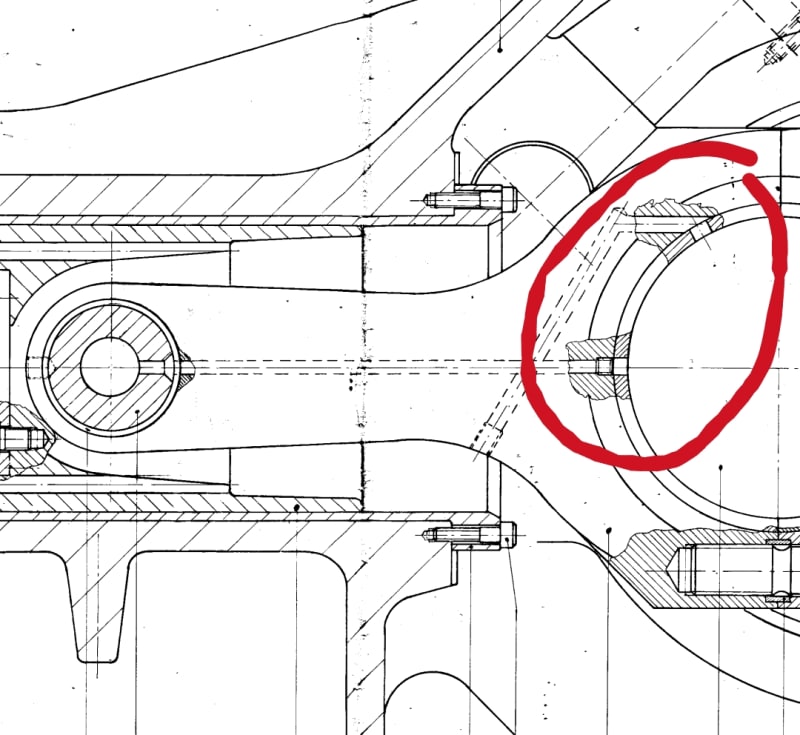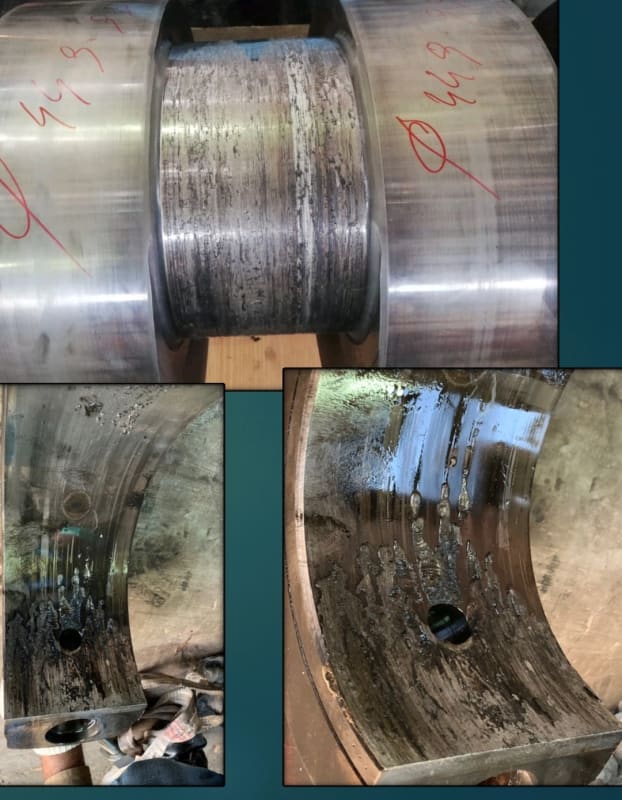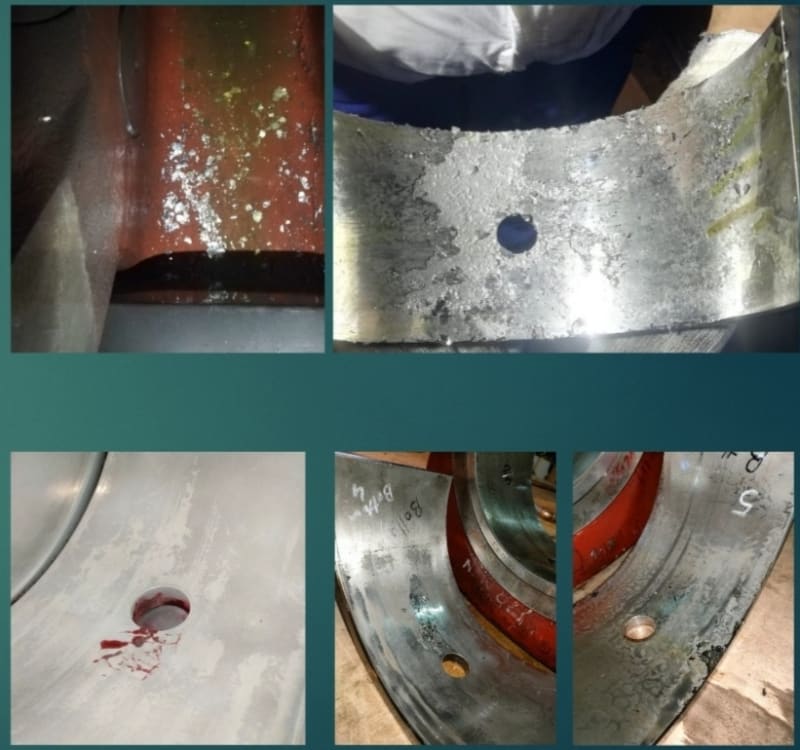Emenent1999
Mechanical
- Jun 13, 2024
- 17
thread407-509102
Reference this thread, now we have faced 8th big end bearing failure.
Can anyone provide details how Cavitation can be verified if there is any. As the other two pumps has same parameter but failure is being observed only in one
Also comment on the Babbitt of the bearings. Previous or old se bearings have ASTM Babbitt Grade 2 while new bearings which are failing have Babbitt Grade 3
Grade 2 Babbitt has high toughness due to low copper and high tin
Grade 3 Babbitt has high hardness due to relatively high copper and low tin
Reference this thread, now we have faced 8th big end bearing failure.
Can anyone provide details how Cavitation can be verified if there is any. As the other two pumps has same parameter but failure is being observed only in one
Also comment on the Babbitt of the bearings. Previous or old se bearings have ASTM Babbitt Grade 2 while new bearings which are failing have Babbitt Grade 3
Grade 2 Babbitt has high toughness due to low copper and high tin
Grade 3 Babbitt has high hardness due to relatively high copper and low tin




